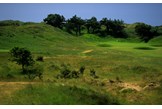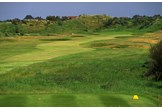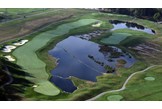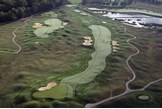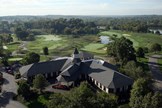feb Major venues 2008
Published: Last updated:
The 2008 Masters Tournament; Augusta National, Georgia, USA; April 7-13
What’s changed for ’08: First hole: Ten yards added to the front of the Masters tee providing more flexibility in the event of a strong northwest wind. Remains 455 yards. Seventh: Green changed for agronomic reasons with approximately six feet added to the left of the green allowing the possibility of two or three additional pin placements. Ninth: Green changed for agronomic reasons and right pin placement softened on first and middle plateaus. 11th: Several trees removed to improve viewing. Augusta Chairman Billy Payne said: “Refinements to the golf course and grounds have been made almost every year since the Tournament’s inception and this year was no exception. “Overall, we are happy with the golf course. We think last year’s exceptionally high scores were an anomaly due to the frigid, windy weather.”
The US Open; Torrey Pines South Golf Course, San Diego, California; June 9-15
What’s changed for ’08: Torrey South in an annual PGA Tour stop for the Buick Invitational, but it’s never hosted a Major. There hasn’t been this much reconstruction on the South Course since it was redesigned by architect Rees Jones in 2001 to attract the US Open. The USGA did decide to convert the entire course to kikuyu grass, which grows rampantly in warm weather and has a thick, grabby nature. About a million square feet of kikuyu has been laid. USGA Director of Competitions Mike Davis, who determines the course setup for each US Open, says: “It’s a really hard course now – one of the hardest on the PGA Tour. It’s going to end up being about 350 yards longer than any Open we’ve played. The greens aren’t as scary as places like Oakmont, but each Open has its own identity. “You’re going to have to be a great ball-striker at Torrey Pines. You’ll have to keep it in play, hit it long, have the right distance control. We haven’t had an Open since 2002, when Bethpage was so wet, where we’ll put more long irons into players’ hands.” Like the sixth, the 18th will be converted from a par-5 to par-4 to make the course par-70. The 18th will play at about 500 yards, with an approach to the green over water.
The Open Championship; Royal Birkdale, Lancashire; July 17-20
What’s changed for ’08: This will be the ninth time that golf’s oldest Major will visit these Southport links, but anyone who’s played in previous Opens here will hardly recognise the course. Lots of alterations have been made by the R&A and archiecht Martin Hawtree, whose brief was to ‘tighten up’ the course without resorting to an excessive increase in length. This has resulted in one new green at the 17th, 20 new hazards, 16 of which are fairway bunkers and six new tees, leading to a total length of 7,122 yards, an increase of 154 yards. Peter Dawson, Chief Executive of The R&A, said: “We have paid particular attention to the introduction of tee shots that give players a number of strategic options and through tighter bunkering and the recontouring of green surrounds, intended to make players execute more imaginative recovery shots around the greens.” How to get there: Tickets are on sale now, via the Open website at www.opengolf.com. They cost from £10 for the first Sunday and rise to £55 for the final day.
The US PGA Championship; Oakland Hills Country Club, Michigan; August 4-10
What’s changed for ’08: There’s been a $1.8 million renovation of the South Course at Oakland Hills, famously dubbed “The Monster” by Ben Hogan after the 1951 U.S. Open. Architect Rees Jones has stretched the course more than 300 yards, repositioned fairway bunkers and narrowed fairways. The length has gone up to 7,446 yards from 7,099 yards with 15 new tees. At least 28 bunkers have been repositioned or rebuilt and 14 more new ones added. Some fairway landing zones have even shrunk to to a width of just 22 yards wide. The regualr par-5s at the eighth and 18th holes will play as par-4s for the tournament, giving the layout four par-4s of at least 490 yards. Only the par-3 third hole remains intact – a new tee can stretch the par-3 ninth to 257 yards if needed. Oakland Hills is one of those wonderful rolling pieces of property where the holes fit like a glove,” said Jones, who has renovated seven US Open courses and six PGA venues. “When we made the changes, it was natural. If somebody blinked from 50 years ago to now, you wouldn’t know we touched it.”
The 37th Ryder Cup; Valhalla Golf Club, Louisville, Kentucky; September 16-21
What’s changed for ’08: Designer Jack Nicklaus has recently overseen the most extensive changes in the 20-year history of the course in preparation for September’s big showdown. About 1,000 trees have been removed, four greens have been dynamited and transplanted (one didn’t meet his approval and has recently moved again) and the second hole may play as a 535-yard par-4 for the pros. I thought we had a pretty good golf course to start with, but times have changed,” Nicklaus said. “It’s been 20 years since we did the course, and equipment has changed dramatically. And the ability of the players has changed dramatically with the equipment. To challenge the players today we needed to add some length and spice to the golf course, and in some places we have softened it a bit.” Every hole has been affected in some way. The grass on all 18 greens has been replaced, greens on the sixth, eighth, 11th and 16th holes have been rebuilt and bunkers have been added to seven holes. Valhalla played 7,167 yards for the 2000 PGA, won by Tiger Woods, but will play about 7,500 yards from the back tees this year.






